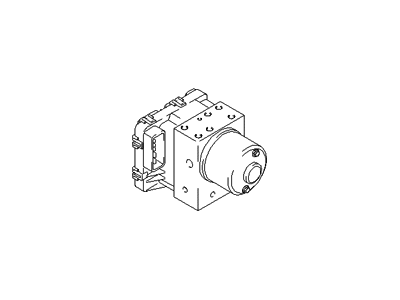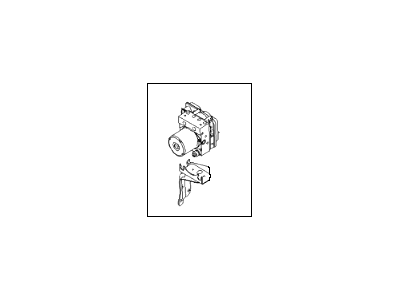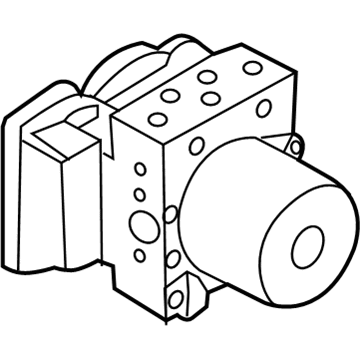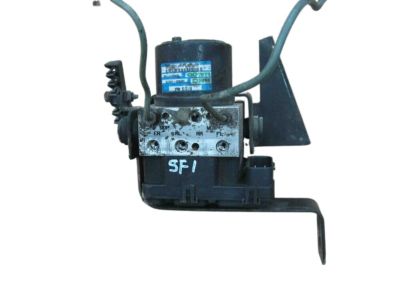×
- Hello
- Login or Register
- Quick Links
- Live Chat
- Track Order
- Parts Availability
- RMA
- Help Center
- Contact Us
- Shop for
- Hyundai Parts
- Hyundai Accessories


My Garage
My Account
Cart
Genuine Hyundai Santa Fe ABS Control Module
Anti Lock Brake Control Module- Select Vehicle by Model
- Select Vehicle by VIN
Select Vehicle by Model
orMake
Model
Year
Select Vehicle by VIN
For the most accurate results, select vehicle by your VIN (Vehicle Identification Number).
35 ABS Control Modules found

Hyundai Santa Fe Brake Hydraulic Unit Assembly
Part Number: 58900-26560$1538.67 MSRP: $2200.11You Save: $661.44 (31%)Ships in 1-3 Business DaysHyundai Santa Fe Abs Pump Control Module 255-7B7
Part Number: 58910-2B800$3223.85 MSRP: $4609.71You Save: $1385.86 (31%)Ships in 1-3 Business DaysHyundai Santa Fe Hydraulic Module
Part Number: 58910-2B801$3223.85 MSRP: $4609.71You Save: $1385.86 (31%)Ships in 1-3 Business DaysHyundai Santa Fe Abs Pump
Part Number: 58910-2B850$2276.10 MSRP: $3254.55You Save: $978.45 (31%)Ships in 1-3 Business DaysHyundai Santa Fe Hydraulic Module Assembly
Part Number: 58900-2B801$3373.50 MSRP: $4823.69You Save: $1450.19 (31%)Ships in 1-3 Business DaysHyundai Santa Fe Hydraulic Module
Part Number: 58910-2B600$2926.87 MSRP: $4185.06You Save: $1258.19 (31%)Ships in 1-3 Business DaysHyundai Santa Fe Brake Hydraulic Unit Assembly
Part Number: 58900-26150$233.94 MSRP: $328.68You Save: $94.74 (29%)Ships in 1-3 Business DaysHyundai Santa Fe Anti-Lock Brake Pump
Part Number: 58920-B8AC0$1205.98 MSRP: $1724.40You Save: $518.42 (31%)Ships in 1-3 Business DaysHyundai Santa Fe Anti-Lock Brake Pump
Part Number: 58910-S2650$1007.91 MSRP: $1441.19You Save: $433.28 (31%)Ships in 1-3 Business DaysHyundai Santa Fe Brake Hydraulic Unit Assembly
Part Number: 58900-26170$1262.66 MSRP: $1805.45You Save: $542.79 (31%)Ships in 1-3 Business DaysHyundai Santa Fe Brake Hydraulic Unit Assembly
Part Number: 58900-26200$1262.66 MSRP: $1805.45You Save: $542.79 (31%)Ships in 1-3 Business DaysHyundai Santa Fe Brake Hydraulic Unit Assembly
Part Number: 58900-26500$1262.66 MSRP: $1805.45You Save: $542.79 (31%)Ships in 1-3 Business DaysHyundai Santa Fe Brake Hydraulic Unit Assembly
Part Number: 58900-26180$1455.68 MSRP: $2081.45You Save: $625.77 (31%)Ships in 1-3 Business DaysHyundai Santa Fe Brake Hydraulic Unit Assembly
Part Number: 58900-26550$1455.68 MSRP: $2081.45You Save: $625.77 (31%)Ships in 1-3 Business DaysHyundai Santa Fe Brake Hydraulic Unit Assembly
Part Number: 58900-26350$1492.40 MSRP: $2133.95You Save: $641.55 (31%)Ships in 1-3 Business DaysHyundai Santa Fe Brake Hydraulic Unit Assembly
Part Number: 58900-26510$1538.67 MSRP: $2200.11You Save: $661.44 (31%)Ships in 1-3 Business DaysHyundai Santa Fe Hydraulic Module Assembly
Part Number: 58900-2B800$1565.73 MSRP: $2238.81You Save: $673.08 (31%)Ships in 1-3 Business Days
| Page 1 of 2 |Next >
1-20 of 35 Results
Hyundai Santa Fe ABS Control Module
If you are looking for affordable high-quality OEM Hyundai Santa Fe ABS Control Module, then you have come to the prime place. Our website provides a large amount of genuine Hyundai Santa Fe ABS Control Module at unbeatable prices. All our parts come backed with the manufacturer's warranty.
Hyundai Santa Fe ABS Control Module Parts Questions & Experts Answers
- Q: What is the purpose of the Anti-lock Brake System (ABS),ABS Control Module and ABS Sensor and how does it function on Hyundai Santa Fe?A:ABS on the other hand is the system that aims at providing vehicle steerability, directional stability and enhance optimum deceleration during braking on varied road surfaces and sever conditions by comparing the rotation of each wheel, and applying hydraulic pressure to the brake to prevent wheel locking. This system has a hydraulic electronic control unit, actuator assembly with electric hydraulic pump and solenoid valves, and a computer to control hydraulic line pressure on the basis of the information obtained by the wheel speed sensors. In this system, the emission of electrical signals is done by speed sensors present at every wheel; the front ones are bolted to the steering knuckles while the rear ones are fastened to the suspension trailing arms. The EBD or the electronic brake booster control smart warnings indicate that the ABS needs attention; the basic quick checks include brake fluid levels, secure connections of the wires, check fuses and wiring harness. If the problems do not resolve, then it is important to get an expert opinion and carry out fixing in order to eliminate the problems. For the removal of wheel speed sensors, one has to first unlock the lug nuts, lift the car, then disconnect the electrical connector for the sensor, then remove the bolt holding the sensor in place and finally get the sensor out of your vehicle carefully and conversely for installation of the wheel speed sensors one removes the nut of the bolt holding the sensor and places the electrical connector correctly and the nut of the bolt appropriately tight as possible.
Related Hyundai Santa Fe Parts
Browse by Year
2023 ABS Control Module 2022 ABS Control Module 2021 ABS Control Module 2020 ABS Control Module 2019 ABS Control Module 2018 ABS Control Module 2017 ABS Control Module 2016 ABS Control Module 2015 ABS Control Module 2014 ABS Control Module 2013 ABS Control Module 2012 ABS Control Module 2011 ABS Control Module 2010 ABS Control Module 2009 ABS Control Module 2008 ABS Control Module 2007 ABS Control Module 2006 ABS Control Module 2005 ABS Control Module 2004 ABS Control Module 2003 ABS Control Module 2002 ABS Control Module 2001 ABS Control Module 2000 ABS Control Module















